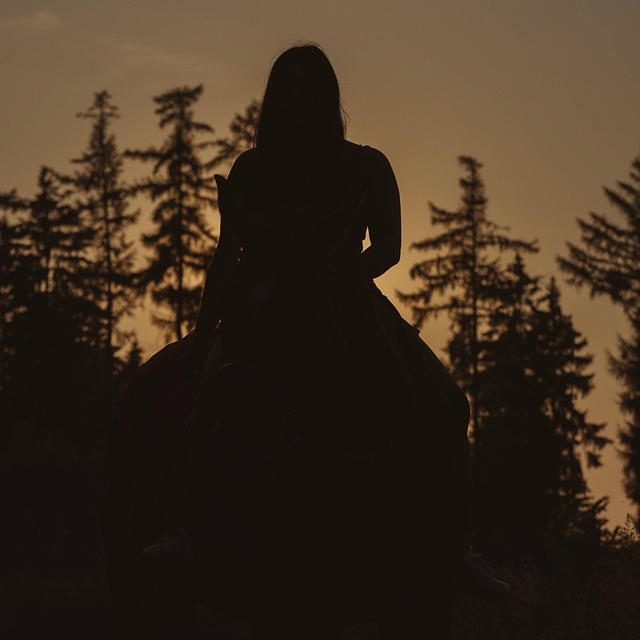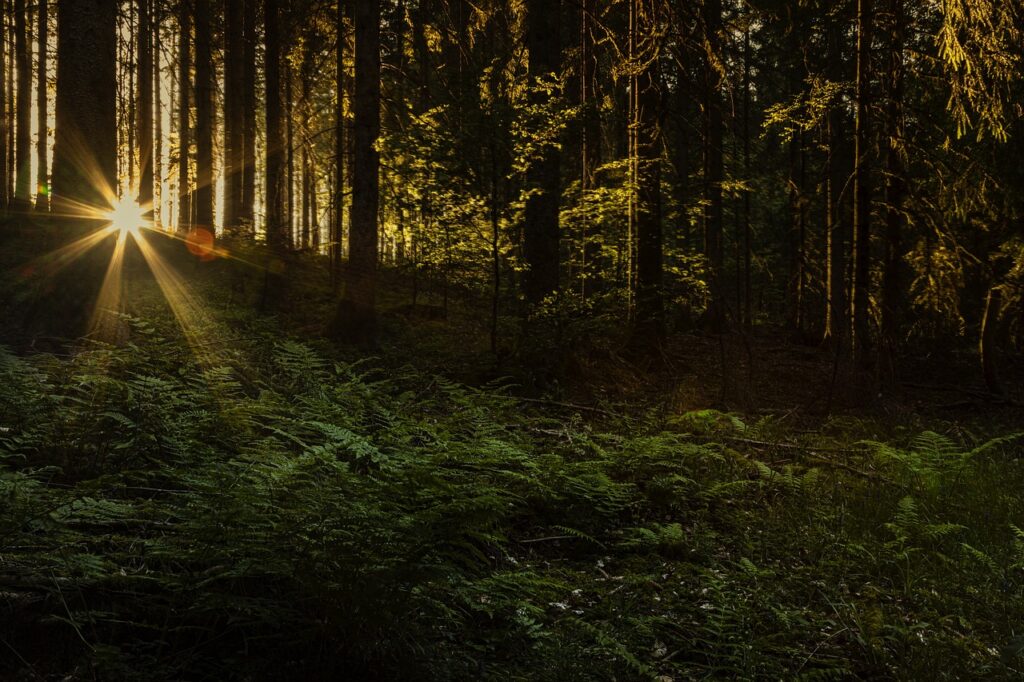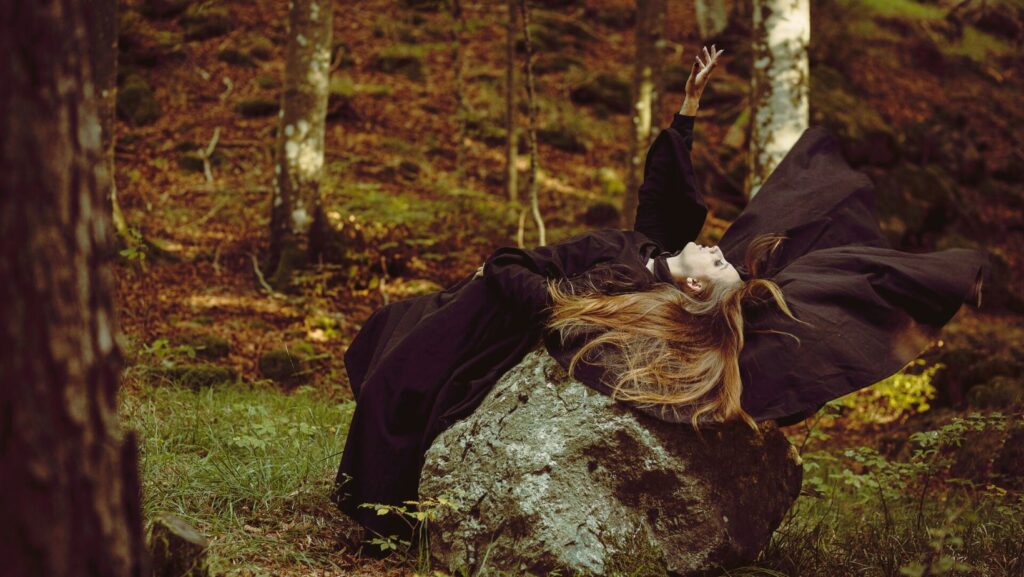In 1792, 100 years after the Salem witch trials in Colonial Massachusetts, a similar drama played out in Winnsboro, SC, a small community about 30 miles north of Columbia, SC. Cattle mysteriously became ill. There were reports of people being levitated or changed into animals. Some claimed to be cursed with peculiar maladies. There were rumors of witches gathering and at least one sighting of the devil.
An article on page three of the November, 10, 1792, South Carolina Gazette gave this account:
“A number of wretches have beaten and abused a man about 80 years old and two women, who both exceed that age, because they happened to possess more sense than their neighbors and were otherwise strikingly distinguished from them by their inoffensive conduct and purity of their morals.
“These remarkable singularities gave rise to a pretended belief that they were agents of the devil, that they were guilty of the sin of witchcraft, and they were treated accordingly. After whipping them in a most shocking manner, hot coals were applied to their extremities ’till signs of life were scarcely discernible.”
The number of suspected witches varies depending on the source; some say there were four, others say three. The unfortunate victims, Mary Ingleman, Hending Smith, and his wife, Sally, were carried off to a barn outside town and tried by a self-selected judge and jury for witchcraft in Fairfield County. The bulk of witchcraft accusations seem to have fallen on Ingleman.
A Court of Witch Doctors
Much of what we know of the incident comes from lawyer Philip Edward Pearson’s 1837 letter to Dr. Thomas Cooper, former President of South Carolina College (now the University of South Carolina) published in the 1859 Keowee Courier and from an unpublished manuscript he wrote titled History of Fairfield District, South Carolina.
From Page two of the July 30, 1859 Keowee Courier under the heading “Witchcraft in the Nineteenth Century:
“In the year 1792, witches abounded in Fairfield. Many a poor girl was thought to be sadly afflicted by these miscreants, and not a few young persons of the other sex. In fact, to so great a length did they carry their terrible enmities to a numerous list of individuals that to relieve the sufferers, it was deemed necessary to give the witches a trial and, if found guilty of the charges alleged against them, to punish them with signal severity. In that year, a court composed of witch-doctors was held at the house of a Mr. Thomas Hill, five miles below Winnsboro. Four persons were tried, found guilty, and punished with stripes (flogging) and burning their feet at a bark fire so that the soles came off.”

Ingleman, who Pearson described in the letter as an old German woman of 70 years of age, was accused of levitating a cow into the air and then dropping it, causing its death. A local woman testified that Ingleman had levitated her into the air and caused her to spit up balls of hair with pins sticking out.
A 1969 article in the Columbia Record that revisited the episode stated that “a pair of sisters (named Henley) claimed that Mary Ingleman caused them to have fits and, at times, rise from their beds and cling to the ceiling. This levitation was so powerful, according to the Pearson manuscript, that four strong men couldn’t keep the sisters down to earth.”
Isaac Collins accused Ingleman of turning him into a horse and riding him to a “grand convention of witches” where the devil complimented Mary Ingelman on her horse. She replied, “Ah,…This is that rascal Collins!” according to an October 2022 article by Pelham Lyles, director of the Fairfield County Museum.
This account is the first time I have heard witches turning people into horses and riding them to coven meetings. I guess that was the supernatural Uber of the day.
Both the Columbia Record and Lyles note that Ingleman took her persecutors to court seeking legal redress for the injuries inflicted on her. John Crossland was tried and found guilty of aggravated assault and fined five pounds. He never paid the fine and left the county after his trial. She also prosecuted Joshua Durham, who was found not guilty. The court records on this case are recorded in a collected index of Fairfield County Courthouse records by historian Brent Holcombe, according to Lyles.
Witchcraft, Mass Hysteria, or Ergot Poisoning
Kirk Mishrell, in his article, The Devil Went Down to South Carolina, in the November/December 2021 issue of the Skeptical Inquirer, offers a possible explanation for the paranormal events in Fairfield County in 1892: ergot poisoning.
He hypothesizes that some of the victims’ symptoms, including hallucinations and disorientation, are a good match with ergot poisoning. Ergot is a fungus that grows on grains, especially rye, and can mimic the effects of LSD.
A US Forest Service webpage titled Ergot: The Psychoactive Fungus that Changed History contains the following statement:
“Ergot poisoning is a proposed explanation of bewitchment. Most historians today believe that the witchcraft trials that led to thousands of deaths and burnings at the stake in Europe during the Dark Ages were likely related to outbreaks of ergot poisonings. The unfortunate victims of the Salem witch trials of 1692 also exhibited symptoms of ergot poisonings. Ergotism is rare today due to the careful screening of cereal grains.”
If you want to explore the mass hysteria angle, the History Channel’s 7 Mysterious Mass Illnesses That Defied Explanation article is a good starting point. It discusses the Dancing Plague of 1518, the Salem Witch Trials, the Writing Tremor Epidemic of 1892, the Mad Gasser of Mattoon in 1944, the June Bug Epidemic of 1962, the Tanganyika Laughing Epidemic of 1962, and the Monkey Men in India, 2001.
The Strange Case of Barbara Powers
Pearson’s 1837 letter also chronicles a witchcraft case in 1813 in Lancaster, SC, about 40 miles south of Charlotte, NC. An old woman named Barbara Powers, who lived in Chesterfield, brought suit against seven or eight individuals for assault, battery, and false imprisonment.
Powers was accused of having maltreated, by diabolical arts, a poor girl residing in Lancaster. The girl had appealed to some friends who “went to the old woman, gently laid their hands on her, and brought her into Lancaster.”
Once there, they forced Powers to touch the girl and say over her, “God bless you.” And that as soon as this was accomplished, the girl instantly recovered. I found this method of removing a witch’s curse described in several newspaper stories, including a February 03, 1870 article in the Yorkville Enquirer, which tells the story of two witches: Balsey Fox and Mrs. Biggeret.

According to Pearson, Judge David Johnson presided over the case and “as a matter of curiosity, permitted the girl to be sworn.”
The girl testified that one evening, while she lay down to rest, Powers came into her home, sat upon her, and choked her with great violence. Then, according to Pearson’s letter:
“After this, Barbara raised her up, converted her into a horse, rode her to Lancaster village, went through the keyhole into several shops, brought out goods of great value, loaded her with them, and rode her into Chesterfield with her booty. Barbara subsequently rode her to Cheraw and, proceeding in like manner, obtained bags of goods and rode her back to her residence. With the severity of her almost incessant hardships in the service of the witch, her health and strength greatly declined.”
At this point, Pearson tells us the judge interposed and cut off all further testimony. Apparently, his curiosity was satisfied, if not exhausted.
Witch or Myth?
We are fortunate to have a 2021 paper from the University of South Carolina Upstate Student Research Journal by Brandon Smith, Bobbie Jo Wimberly, and Courtney McDonald. The paper Barbara Powers: Witch or Myth? The Last Case of Witchcraft in South Carolina examined whether or not records of the 1813 court case existed.
The USC authors combed through county census records, newspaper articles, and online databases and found no record of a Barbara Powers, who lived during that time. Thomas Cooper, Philip Pearson, and Judge David Johnson were real people. Interestingly, Johnson went on to become the 62nd Governor of South Carolina, serving from 1846 to 1848.
However, Smith et al. note that the timing of the witchcraft trial and the time Johnson was a judge do not match. According to the Encyclopedia of South Carolina, Johnson was elected solicitor of the middle circuit in 1811 and did not become a judge until 1815. Therefore, at the time of the Powers case, he was a district attorney.
Their conclusion was as follows:
“Given the lack of evidence, we are inclined to believe that the case never truly occurred; however, we will likely never be able to definitively prove if Barbara Powers was accused of witchcraft in 1813 or not. What we do know is that allegations of witchcraft were serious enough to the elite men of South Carolina to be discussed at length in a published letter two decades later.”
If you’d like to listen to Barbara Power’s story in podcast form, check out The Wicked South’s Witchcraft and the “Diabolical Arts” episode
Epilogue
Here’s what both of these cases have in common. If the reports are accurate, both Ingleman and Powers not only lived to tell about their witchcraft trials but also were able to bring legal cases against their accusers.
Both of these women appear to be vulnerable and relatively powerless. Handy scapegoats for people struggling with forces or circumstances they could not understand or control. This conversion of fear to violence is a story older than Halloween and far more frightening. Still, we can take comfort in that neither Ingleman nor Powers became the star attraction on the gallows or got a front-row seat at a witch burning.
Are we afraid of monsters or frightened by the knowledge that people we know can become monsters? Do we fear what goes bump in the night, or do we fear what we might do to get even with someone who wronged us if no one was watching and we could accuse them of anything?
Now, if you’ll excuse me, I have to give a little old lady a ride to Cheraw.
Check out my new book, Blood on the Blue Ridge: Historic Appalachian True Crime Stories 1808-2004, cowritten with my friend and veteran police officer, Scott Lunsford on Amazon. Buy it here!

Sources
In addition to the 1837 letter, Philip Edward Pearson penned an unpublished manuscript, The History of Fairfield District, South Carolina, which includes a section titled Superstition, Apparitions, Witchcraft, which somehow wound up in the archives of the State Historical Society of Wisconsin. Many of the details of the articles referenced in this post appear to have come from that manuscript. I was not able to find it online.
Keowee Courier, Pickens, SC, Saturday, July 30, 1859, Page 2, “Witchcraft in the Nineteenth Century”
Yorkville Enquirer, York, SC, Thursday, February 03, 1870, Page 1, “A Witch Story” and “Mosie Gabbie of York”
The State, Columbia, SC, Sunday, March 3, 1957, Page 31, “Witch Trial”
Columbia Record, SC, Saturday, December 6, 1969, Pages 9-10, “Salem? Heck, There Were Witches In Fairfield County, They Claim” by Eric Pearson
Greenville News, SC, Friday, September 24, 1971, Page 10, “Witchcraft Trial Reveals Strange Legal Case” by Mike Bowen
Dayton Daily News, OH, Friday, October 30, 2015, “Four women were tried as witches 100 years after Salem” by Amy Trainum.
Skeptical Inquirer Volume 45, No. 6, November/December 2021, “The Devil Went Down to South Carolina? A Secret History of Witchcraft in Fairfield County” by Kirk Mishrell
Smith, Brandon; Wimberly, Bobbie Jo; and McDonald, Courtney (2021) “Barbara Powers: Witch or Myth? The Last Case of Witchcraft in South Carolina,” University of South Carolina Upstate Student Research Journal: Vol. 14, Article 5.
The Fairfield County Witch Persecution of 1792 by Pelham Lyles
Mary Ingleman Oct 2022 by Pelham Lyles
Wikipedia: Witch trials in Connecticut
Ergot: The Psychoactive Fungus That Changed History (US Forest Service)
History Channel: 7 Mysterious Mass Illnesses That Defied Explanation by Jessica Pearce Rotondi

